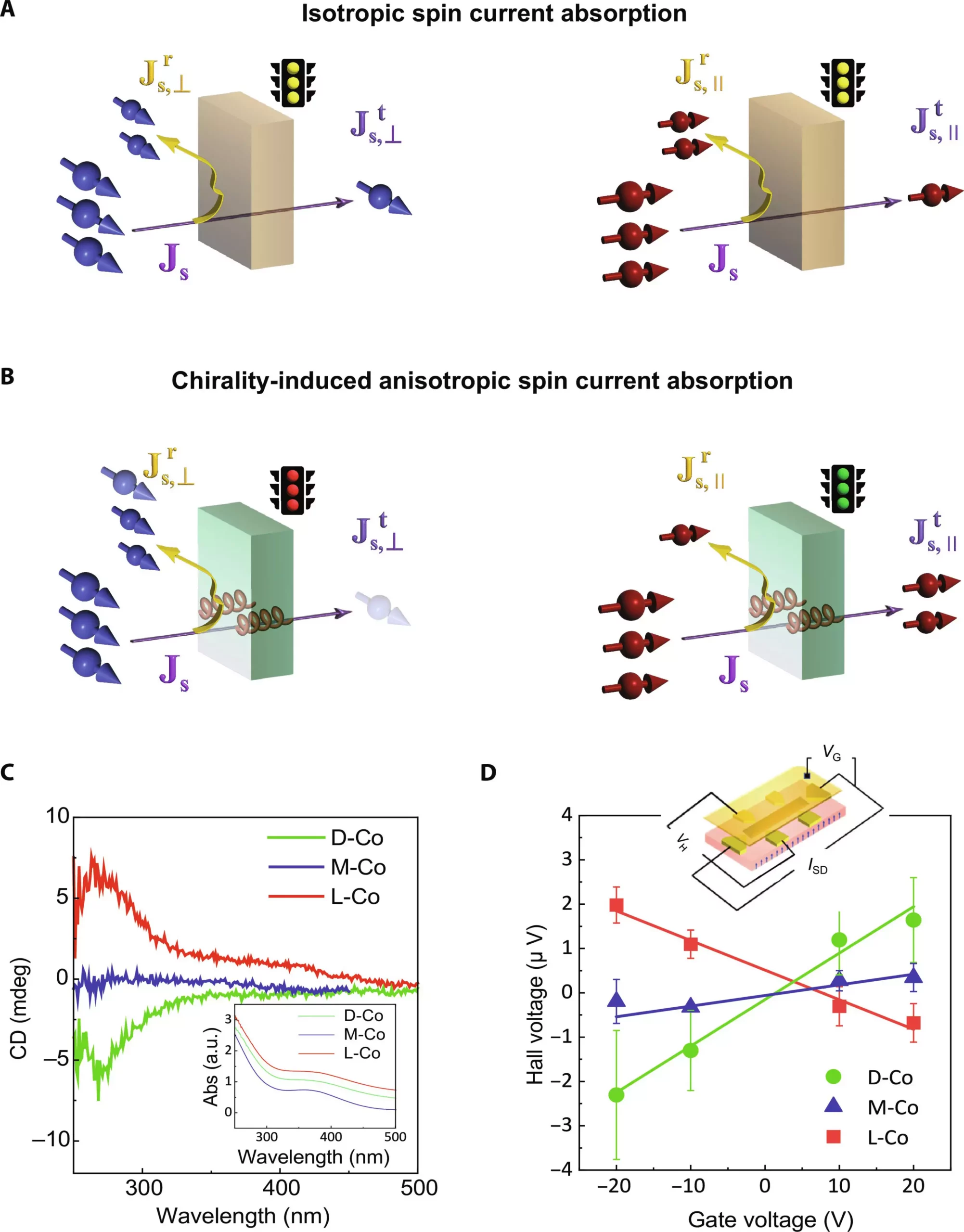In a recent study conducted by researchers from North Carolina State University and the University of Pittsburgh, the focus was on understanding how spin information, known as a pure spin current, moves through chiral materials. This study revealed that the direction in which spins are injected into these materials plays a crucial role in determining their ability to pass through them. This discovery opens up new possibilities for designing energy-efficient spintronic devices that can revolutionize data storage, communication, and computing.
Chiral materials, such as those used in the study, are unique in that they cannot be superimposed on their mirror image. Think of your left and right hands – a left-handed glove does not fit on your right hand, and vice versa. These materials allow researchers to control the direction of spin within them, making them ideal candidates for spintronic applications. Prior to this study, it was believed that the sense of chirality of a material was crucial in determining how spin would move through it. However, the researchers found that injecting pure spin into a chiral material significantly depends on the angle between the spin polarization and the chiral axis.
The researchers utilized two different approaches to inject pure spin into chiral materials – microwave particle excitation and ultrafast laser heating. Both methods yielded the same conclusion: the absorption of spin current strongly relies on the alignment of the spin polarization with the chiral axis. In cases where the spin was aligned perpendicular to the chiral axis, it did not travel through the material. However, aligning the spin parallel or anti-parallel to the chiral axis led to a remarkable 3000% improvement in absorption rates.
This breakthrough in understanding the behavior of spin in chiral materials not only sheds light on the potential of utilizing chiral “gateways” in electronic devices but also challenges existing beliefs about the interaction between chiral materials and spin. By demonstrating that spin can only pass through these materials in specific directions, the researchers have laid the foundation for designing innovative spintronic devices that can greatly enhance efficiency and performance. This work, published in Science Advances, marks a significant step towards unlocking the full potential of chiral materials in the field of spintronics.
The study conducted by researchers from North Carolina State University and the University of Pittsburgh has uncovered exciting possibilities for harnessing the unique properties of chiral materials in spintronics. By exploring the relationship between spin information and chiral materials, the researchers have paved the way for future advancements in electronic devices that rely on spin rather than charge to transmit information. This groundbreaking research not only expands our understanding of chiral materials but also opens up new avenues for developing energy-efficient and high-performance spintronic devices.


Leave a Reply